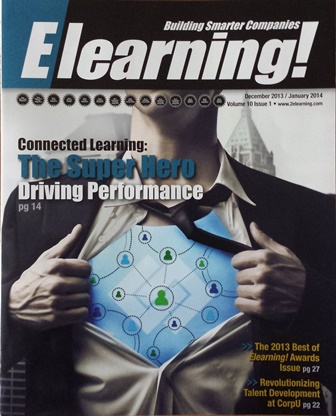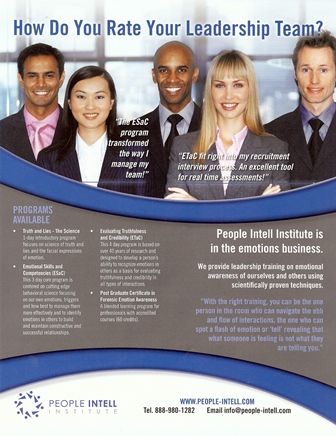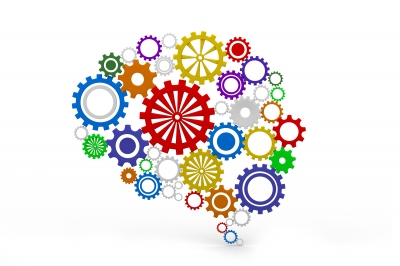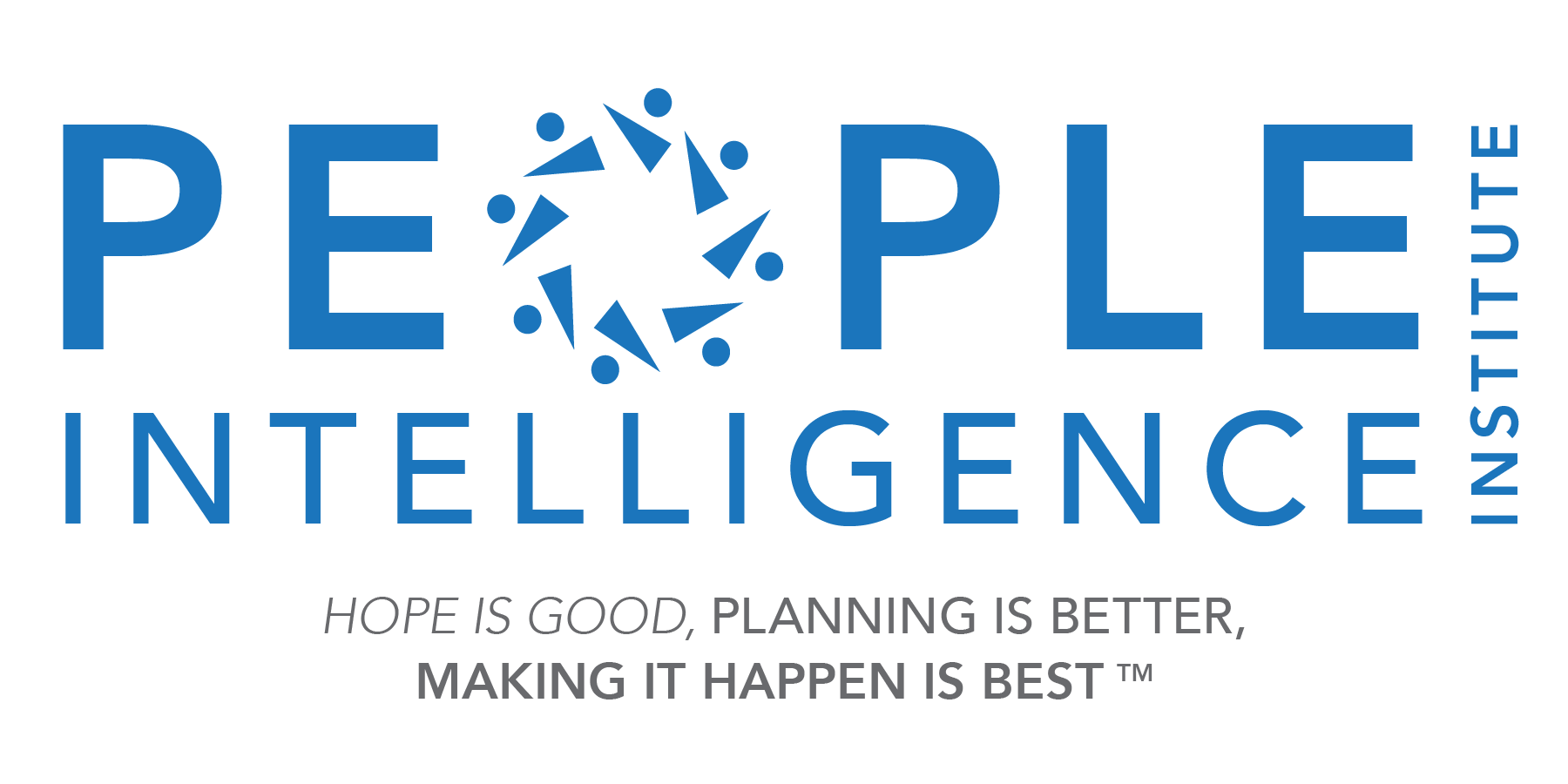"This course has helped train my eye and my mind to see more emotions in others, and as a result, have more successful interactions with others when they are emotional. I am more likely to notice things earlier, before escalation, when the potential to make better choices is stronger."
Read MoreCan you really feel your way to success?
The Emotional Skills & Competencies (ESaC) courses have brought together an impressive group of delegates with so many unique backgrounds, cultures and experiences. From entrepreneurs to seasoned IT managers to high level HR recruiters and consultants to psychologists and therapists, to financial advisors and recent college graduates just starting off on their professional careers. Each person successful in their own right - and each recognizing that emotional awareness is a crucial part in their ongoing personal and professional development journey.
Psychologist Dr. Carey Cherniss from Rutgers University, published a study citing a 19 point business case for emotional intelligence. Here are a few highlights from the paper and how emotional intelligence qualities differentiate sucessful performers:
- How well executives handled their own emotions determined how much people around them preferred to deal with them.
- The most successful recruiters in the US Airforce scored significantly higher in emotional intelligence competencies.
- Financial advisors of managers trained in emotional skills outperfomed (grew business by 18.1%) the financial advisors who worked under untrained managers (grew business by 16.2%).
- Employee retention was higher when selected for emotional competencies. In addition performance was significantly better. The executives selected tended to perform in the top third based on salary bonuses for performance.
- Accurate self-assessment was associated with superior performance.
One of the things that we often fail to realize is that emotional awareness is a skill, just like technical know-how is a skill that is built over time with experience and training. We can build upon each emotional competency to improve our emotional lives by realizing the impact that our emotions and the emotions of others have on our performance and using it mindfully and responsibly to nurture relationships that are at the core of business, family and friendships.
There are four skills to improving emotional awareness and intelligence, that leading psychologist and researcher Dr. Paul Ekman outlined in his book Emotions Revealed after more than 40 years of research into emotion. Each of these skills is a piece of the foundation for emotional competencies:
1. Increasing self-awareness of when we are becoming emotional.
One of the hardest skills to develop but also one of the most rewarding. Having emotional self-awareness allows us to build-in an opportunity for choice about when you are emotional. While we cannot stop ourselves from becoming emotional, we can choose how to act and how to channel that energy into a constructive reaction.
2. Choosing how you behave when you are emotional.
Emotional reactions can either be constructive or destructive. While emotions have evolved to help us deal with situations that need quick reaction without thinking - sometimes they get us into trouble. There are times when our emotions get in the way of collaboration. Often, it is only after the episode that we realize the damage they have caused.
3. Increasing awareness of the emotions of others.
Sensitivity to the emotions of others and having the insight and awareness to respond to the emotions of others forms stronger bonds and connections. Both verbal and nonverbal channels offer rich cues to another persons emotional state.
4. Using the information we have about others wisely.
Sometimes people prefer to hide how they are feeling. Despite their best efforts, emotions can leak - usually through facial expressions. The information provided unbeknownst to the person needs to be handled with care. Responding appropriately to what we see is key. This is where empathy plays an important role and the ability to respond effectively to build stronger and more productive relationships.
The great news is that our emotional competencies can be developed and improved, but the intention must be there. Armed with the 4 core skills and the knowledge, provides the foundation for immediate application. Increase your EQ and start inspiring!
The Architecture of Emotional Competency

"All architecture is a shelter, all great architecture is the design of space that contains, cuddles, exalts or stimulates the persons in that space." - Phillip Johnson
So what kind of space have you created for your employees? Is it one where individuals are physically isolated from one another, making human contact a chore? Are they essentially detached from the process in the place of business, segregated in the name of focus?
The idea that the space is either evocative, inspiring, creative and interactive; or is compartmentalized, inhibitive, cold and foreboding, can speak less to the physical space and more to the leadership that influences the dynamic within that space. The leadership can function as the architects of the kind of space where employees either flourish or whither.
Steven Johnson, in his book, "Where Good Ideas Come From", explains how the coffee houses of 17th-century England fostered the Age of Enlightenment. It was the space - the chaotic, communal atmosphere that lent itself to the emotionally open and honest exchange of ideas. Johnson examines the impact the coffee houses had upon the advancement of western culture and civilization. The coffee houses were the places where ideas could, well, percolate. The best ideas develop over time. They are a bundle of smaller ideas that need time to gestate and a place to be born.
Ideation, the formation of ideas, is a process, like an architectural drawing on a cocktail napkin that becomes a functional piece of art. It begins with free expression. In a space where people feel free to be honest and uninhibited, creativity and innovation will blossom.
The idea of place is not simply about steel and concrete, but about creating an open dialogue. Open space engenders open minds - for ideas, congeniality, innovation and forward-thinking. Just as the principal's office can spark dread in a schoolboy, a work space seen as open to new ideas and truthful human interaction can relieve the stress that stifles imagination.
Eugene Kohn of KPF Architecture spoke about what goes on inside of buildings. "Our goal as architects is to create buildings that inspire people to do whatever it is in that space they need to do. That inspiration comes from within the building as much as from the way it looks from the outside." And so it goes for the attitude projected by management. Are you creating corrals or space to grow?
Architecture in both the practical and artistic sense is a process, indeed the only art form in which the developmental stages (blueprints, drawings, models) are revered along with the finished product. Human interaction is a process of exposition, the testing of ideas and knowledge; its application and review, none of which can happen if employees aren't part of the process and managers aren't attuned to the needs of the work force.
Employees need to feel comfortable in the place and view it as common ground, which will propagate a sense of ownership. In this place, the connections all play a role, as each rivet in the steel supports the structure.
In his elegant book, Why Architecture Matters, Paul Goldberger said, "Architecture is about the making of place, and the making of memory. Architecture gives us joy if we are lucky, and it gives us satisfaction and comfort, but it also connects us to our neighbors, since the architecture of a town or a city is the physical expression of common ground. It is what we share, if only because the architecture of a community is one of the few forms of experience that everyone partakes in: the sharing of place."
The art of architecture is obvious, as is the public face of an organization. But in buildings as well as organizations, the underlying structure supports the mission. Complex interfacing systems keep structures functioning as do complicated human interactions, of which leaders must remain keenly aware. To say the full business process is effective without emotional intelligence is like an architect neglecting an essential structural element. The architect gives equal gravitas to aesthetics and function. It all matters.
Image courtesy of khunaspix / FreeDigitalPhotos.net
Cleaning Out the Attic

Managers often operate under the presumption that emotions have no place at work and they are generally right with regard to financial or economic decisions and operational maneuvers. However, their employees are sentient beings. Emotions and the role they play in the human factor cannot be dismissed.
Whether or not we want to acknowledge them, emotions exist because people exist. They are part and parcel of every person we know. Managers feel they have to be disconnected, so that the detachment can make it easier to make decisions based upon facts, devoid of emotion. That perspective has merits of course but there is a pitfall: the complete repression of all emotions while in work mode. It leads to neglecting emotion in all work-related interactions and can prevent them from 'getting' the human component of the work environment. In short; it interferes with empathy.
Think about the difference empathy makes in our interpersonal relationships - in how we decide to talk to people, how much we decide to listen, how deeply we care. There is an emotional component underpinning every action people take and by tapping in to our emotional intelligence, that enhanced sense of empathy will make us better managers of people. By denying our own emotions we are inhibiting our ability to notice them in others. If we don't understand them, we can't understand motivation, desire, inspiration, commitment and honesty. Is the team really buying into the plan or just paying lip service?
Do you ever feel as though you aren't getting through to people? Have you noticed that employees only come to certain managers with their concerns? Do employees complain at reviews that they don't feel as of they matter? It may be time to clean out the attic...
It's Musty Up Here
Maybe it's time to get up in the attic and dust off your old trophies, read your old journals, sift thru some photos and enjoy the memories, those moments in time that have shaped your life - the laughter, and even the tears. What moments brought you the greatest joy? What single event can still make you feel exhilarated?
How would a trip to the attic make you feel? Might you feel rejuvenated, humble, romantic, artistic and perhaps, human? Your employees feel this way every day and so do their families. The ability to understand how emotions effect change is vital to emotional competency. This competency is an improvable skill those with high EQ possess naturally, but it can be developed with practice.
Some leaders work so hard to remove themselves from emotion in the name of pragmatism they lose the ability to communicate effectively with the very people who can help them make better decisions. They simply forget how to talk to people. The Joe Friday, "just the facts ma'am" approach can leave employees feeling disconnected. That feeling of being under-appreciated or excluded is one of the top reasons for employee discontent.
A trip to the attic can help to find new uses for stored emotions such as confidence, compassion, joy, sadness and connectedness. Revisit Mazlow's Hierarchy of Human Needs ( http://www.maslow.com/) and see how important belonging is. By cultivating empathy, by recognizing and understanding the relevance of emotions in human behavior, leaders can embrace what they find in the attic. They can blow off the dust and put their emotions back in the toolbox, right alongside pragmatism.
Image courtesy of jscreationz / FreeDigitalPhotos.net
Interview on The Bronc - Emotional Intelligence and Awareness

An interview with Mike Palestina on Rider University's "The Bronc."
In an effort to give back each month Mike volunteers his knowledge of career planning and his coaching services to professionals who find themselves in transition due to the current economic conditions. His focus is on building an executable job search strategy that includes practical tips on effective networking, interviewing and negotiation. Mike is regularly invited to speak on these topics across New Jersey at Department of Labor and Professional Services Group events.
"I believe that emotional awareness of ourselves and others and effectively managing those emotions are essential skills required for successful leadership. My position is supported by research conducted by Harvard University, Carnegie Institute of Technology and many others.
The Harvard study concluded that EQ is twice as important as IQ and functional expertise in career success. The Carnegie Institute of Technology study shows that 85 percent of your financial success is due to skills in “human engineering,” your personality and ability to communicate, negotiate, and lead.
Over the last 10+ years I have used emotional awareness and verbal and non-verbal communications to enhance my one-on-one executive coaching and team coaching services."
Listen to Mike discuss the most vital leadership skill...emotional awareness and competencies.
Nov. 10, 2013 http://www.1077thebronc.com/?page_id=356
Emotional Clarity
 In his memoir, "A Drinking Life", Pete Hamill said drinking takes away two of a writer's most valuable tools, clarity and memory.
In his memoir, "A Drinking Life", Pete Hamill said drinking takes away two of a writer's most valuable tools, clarity and memory.
Clarity is energizing. Clarity is illuminating. Without it your path forward is uncertain, murky and frustrating. Your goals are fuzzy and your optimism almost non-existent. The master motivator Tony Robbins says, "In order to have an extraordinary life you must have an extraordinary psychology." That state requires clarity of purpose. "Clarity is power," Tony declares.
Emotional clarity is a double-bladed plough that cuts through the muck of communication and clears a path for mutual understanding. But like any tool it must be used properly. You must understand its utility and use it intelligently to achieve optimum results. In short; you gotta read the directions.
In a thesis written for Ohio State University in 2007, Samantha Mowrer states that emotional clarity is associated with positive and affective well-being, "...faster rebound from an induced negative mood, adaptive coping styles and affirming attributions for the occurrence of positive events." On the flip side, Mowrer reminds us that poor emotional clarity is negatively related to, "ambivalence over emotional expression, depression, neuroticism, social anxiety and distress" among other downward expressions that leave us vulnerable to skepticism and cynicism.
Ambivalence is demoralizing. Apathy is death to a relationship. Nothing hurts more than when the other person simply doesn't care any longer. Much of what drives work and personal relationships to the brink of disaster is uncertainty - about true feelings, needs, goals and fears. Negative attributes can be upended toward a positive bias with emotional clarity. It's the ability to project a clear message, grounded in mindfulness, attentiveness, compassion and truth. It's knowing 'what' so you can know 'how'.
Like any useful tool, it takes time, effort and purposeful practice to attain a level of expertise. It begins by asking two simple questions: What are emotions? How are they expressed?
In order to self-regulate emotions we have to be aware of what they are. In order to empathize with others we need to recognize how emotions are integral to the manner and meaning of their efforts to communicate. In order to cope, adapt, support, affirm, understand and focus, we must pay attention, not just to words but to totality of expression.
Here's a quick example. One of your engineers has been working on a project that has the potential to double the top line growth of your company. On paper his ideas are sound, innovative and well-constructed. You direct him to present his ideas to a critical client in the presence of the CEO but you are unaware he has an abject fear of public speaking.
The engineer fails miserably. His brain seizes. His ideas are stilted, he cannot answer questions about his design, he seems unsure at best if his ideas have any merit. The whole event is a crushing.
What happens next? Your judgment is seen as faulty. Your ability to spot good ideas and groom talent are brought into question. You wonder aloud if the engineer even developed the idea on his own. You question his integrity. You begin to doubt your own abilities.
Two things went wrong here: the engineer failed to properly communicate his fears and you failed to spot his emotional reaction to your directive to present his concept. Had there been greater understanding and empathy, you would have made the presentation yourself, with your engineer on hand to answer questions. His lack of fear would have kept his mind relaxed and focused on the facts. The presentation would have had a different outcome. So what's the lesson?
Once you understand what emotions are and how they have an impact on your own behavior, you become better at seeing and understanding both the prevalence and relevance of emotions in the behavior of others, how emotions affect relationships, stability, communication and trust. Clarity of emotions is paramount to successful communication. Clarity is exciting. It empowers your way forward.
Image courtesy of David Castillo Dominici / FreeDigitalPhotos.net
Elearning! Magazine December 2013 /January 2014 Issue

In August of 2013 People Intell had the privilege to speak at the Enterprise Learning! Conference and Expo held in Anaheim, CA. Our session was entitled "Lie To Me: The Science of Emotional Skills and Deception." We are happy to share with you our article that is featured in the December issue of Elearning! Magazine.
The Benefits of Truth within Leadership
The stakes are high. The truth is critical. What can you do to uncover it?
This denouement can play out across the spectrum of personal and professional human interactions. Just reading the words can trigger anxiety as you replay a time in your life when something mattered, when verity determined the difference between the winners and the also-rans.
Leaving aside the existential question of what truth is; we think we know it when it is before us in our everyday lives and we think we know when it's imperfect.
Truth is predicated on emotion. How does she really feel? What is his agenda? Is he listening to me? What is going on here that doesn't feel right? Why do they seem upset and where do we go from here? Why don't my employees communicate with me? How do I determine the truth?
The first step in finding the truth is to understand that emotions, those we reveal and those we try to suppress, are the drivers behind the behavioral and physiological manifestations that in some cases set off our internal alarms alerting us that something is amiss. We can learn to identify and interpret these cues more consistently and reliably to help us evaluate truthfulness.

The more you consider the possible applications for this skill, the more broadly you can relate its uses. To name just a few; imagine yourself managing a difficult team, hiring for a critical position, conducting an internal investigation, choosing a financial advisor, dealing with a complicated family matter, meeting new clients, or assessing the reaction of a focus group to new products.
This article is not about lying in a toxic sense but about the benefits of uncovering the truth of a situation. It's about personal or professional relationships and our ability to engage friends, employers, staff and counterparts honestly, perceptively and effectively. A person may have misgivings about absolute truthfulness for benign reasons. They may elect to mask their true feelings out of a sense of decorum, social norms, an unwillingness to hurt another's feeling, or as guided by context. The concept of dishonesty isn't always about trickery or malice.
The ability to discern the truth in a given situation has obvious advantages, but as a leadership trait, can be invaluable. A leader has the ability to recognize and manage not just his or her own emotions but also those of coworkers, competitors and employees. Executives with leadership presence have been shown to have high emotional intelligence or EQ, as outlined by Daniel Goleman in the Harvard Business Review.
How are emotions tied to deception and why are these concepts so inexorably linked? The full answer extends beyond the limits of this article but in short emotions tell us what matters, and the aforementioned is communicated in the form of expressions on our faces sometimes willingly and other times unwillingly with the world around us. Whether it is expressed openly, implied or repressed such as in the form of micro facial expressions, the cues are almost always there in front of us. Sensing it, recognizing it and functioning within the emotional underpinnings of it are crucial leadership skills. So how can we acquire or improve upon this ability?
We can learn the science of detecting the truth. Emanating from over 40 years of scientific research paired with real life application has illuminated that 5 channels of communication through which people express thoughts and feelings are key in detecting truth and assessing credibility. Underlying the 5 channels (face, body, voice, verbal style and words) is each individual’s baseline. In the context of deception, establishing a baseline is paramount. The baseline is how someone acts, reacts, speaks, gestures and generally interacts with others when they are in a relaxed state, unencumbered by a need to be deceitful about anything, irrespective of motivation. It's how they smile, stand, animate their faces, express ideas or move their hands when they speak. The trained observer, the leader, will be the one who recognizes what's swimming in the undercurrent. The person who understands how emotions instigate actions will bring the truth to the surface. It's why engaging coworkers is so critical to the success of your company.

How can you acquire what some have called "the leadership skill of the 21st century" and why is it so important to understand the science of deception?
"The ability to accurately detect deceit is real," says Paul Ekman, PhD, UCSF professor of psychiatry and principal investigator of a study published in Psychological Science in 1999. Ekman, who has been a leader in this field for decades, was able to demonstrate the role emotions play in deception. They are as inseparable as the water and the wet.
We can improve our odds by developing an understanding of the underlying emotions that precipitate deceptive behavior. The point is not to know the motivation for the deceit, but to know that it exists and to divine the truth which is often folded into emotion. The real goal is not to catch someone in a lie, but to elicit the truth about the situation in an engaging, intuitive, non-confrontational manner that serves the interests of all concerned.
Most importantly, emotional competencies will help managers bring employees back in to the fold, to make them feel a bigger part of the overall success of the mission. Harvard Business Review recently published findings from a Gallup survey that revealed up to 70% of workers are not engaged, meaning they simply don't care or are downright hostile towards employers. Although there are a host of reasons for this attitude, poor emotional intelligence by managers, directors and c-suite leaders prevents them from engaging employees positively, as part of the culture, rather than negatively, as in the dreaded performance review.
Wouldn't it be more efficient to avoid problems in the first place? Wouldn't employees who believe what they do matters be more likely to give a little extra, alert management to problems, interact with staff in a more honest way? Answer this simple question. Which mindset produces better results, a disengaged workforce or one that is self-determined, informed, worthy and relevant in the process?
Improving proficiency in two areas will propel you to a level beyond simply having people skills: emotional competence and detecting deception. With the right training, you can be the one person in the room who can navigate the ebb and flow of emotions, the one who can spot a flash of contempt, happiness, fear, anger, cynicism, sadness or other 'tells' that what someone is feeling is not what they are telling you. By learning to recognize the hidden emotions that leak out through non-verbal cues and micro-facial expressions, you can draw the honesty out of nearly any situation.
Why You Can't Spot Lies
 "I knew he was lying all along; I should have trusted my gut."
"I knew he was lying all along; I should have trusted my gut."
Who hasn't said something like this after looking back at a situation, whether professional or personal? Once the whole truth has been revealed we like to reconstruct the events and look for the 'aha' moment that confirmed our suspicions. Once we know the lie we like to think we knew it in the moment. But did we really? Hindsight isn't always 20/20.
According to the scientific data, most of us aren't much better at detecting lies than flipping a coin, roughly 54% (Bond and DePaulo 2006). So what makes us so sure after the fact?
Let's back up. Although there are many complicated reasons why we may miss the truth, such as circumstances, limited process time, and our expectations about the outcome, there are cognitive biases that influence our tendency to accept what we've been told as the truth. Here are just a few:
· Visual Bias - the tendency to place more emphasis on visual clues than linguistic or inflection, tone and other auditory influences.
· Truth Bias - the tendency to overestimate other's truthfulness.
· Demeanor Bias - the tendency to judge another's communication style as being honest.
Our innate biases make it particularly difficult to detect lies in those we are closest to, which may seem counter-intuitive until you consider just two factors:
· The stakes are often higher in personal relationships (cheating spouse, teen drug user) so, given the possible consequences, we want to believe the other person.
· If we love the person we tend to give them the benefit of the doubt.
To detect dishonesty you must understand that emotions are the drivers of certain behaviors. Sometimes people are open and honest about their emotions and sometimes they attempt to conceal them. Yet, regardless of motivation, desire or reason - emotions rule!
Have you ever watched professional bull-riding? Those massive animals are constrained by a small pen, ropes, leather and a team of cowboys. They are bristling, coiled to break free and assert their alpha influence. Emotions are like bulls in the chute; they just need to get out and show themselves and they do so despite a person's best efforts to control them. They are conveyed through demeanor, voice, movement and especially through micro-facial expressions.
Emotions are most observable through the face. We can all picture or imitate a sad, angry, fearful or happy face, but we may not always want to show these emotions in a given situation. But in real interpersonal exchanges they can't be held back. So they leak out; they reveal themselves. They tell us the truth behind the facade. The problem is these expressions of emotion typically flash on and off the face so quickly (under 1/2 a second) we cannot see them with our conscience brain unless we know what to look for.
The good news is our brains are startlingly perceptive. The science of rapid cognition (Gladwell 2007) reveals that our brain sees these micro-expressions on a sub-conscious level and reacts to them. These reactions manifest themselves to us through our own emotions. So for example, the envious co-worker who wanted your promotion may congratulate you, but the disdain, disgust or anger they feel toward you is leaked out through a micro-facial expression. Your gut reacts. You feel awkward, uncomfortable, perhaps even angry and you aren't sure why. It's just something you feel.
So you thought he was lying all along? You were probably right. You just didn't know why you knew. Until the whole truth was revealed you relied on visceral feelings and sensations.
The better news is we can learn to recognize deception and deceptive behavior. We can tip the scales in our favor, uncover dishonesty and yes, we have science in our corner.
To become proficient in detecting deception you must be trained through a continuum. Your training must help you attain a higher level of emotional competency. It should teach you to manage your own emotions. With this base of understanding you can learn how to prepare your conscious brain to recognize what your subconscious brain is already seeing. The clarity you gain will be like putting on a new pair of glasses.
The science of micro-facial expressions is about opening up your mind to the human condition; its strengths, frailties, biases and universal codes of meaning.
Image courtesy of ddpavumba at FreeDigitalPhotos.net
